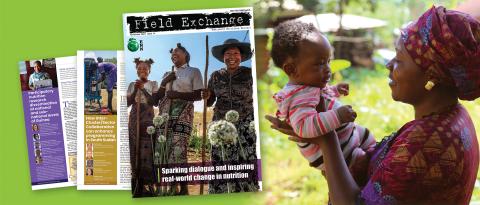Uganda: Effect of lipid-based nutrient supplements among children with stunting
This is a summary of the following paper: Mutumba R, Pesu H, Mbabazi J et al (2024) Effect of lipid-based nutrient supplements on micronutrient status and haemoglobin among children with stunting: secondary analysis of a randomized controlled trial in Uganda. The American Journal of Clinical Nutrition, 119, 3, 829–837. https://pubmed.ncbi.nlm.nih.gov/38278366/
In Africa, stunting, micronutrient deficiencies, and anaemia are widespread among children, negatively impacting their mortality, morbidity, and cognitive development. Insufficient food access and poor dietary diversity, particularly diets that are low in animal-source foods, fruits and vegetables, worsen these conditions. In addition, nutrient absorption and utilisation is hampered by consumption of foods containing phytic acid, and exposure to pathogens and mycotoxins.
The study by Mutumba et al., a randomised controlled community trial conducted in Jinja district, Eastern Uganda, was based on a secondary analysis of data from the Milk Affecting Growth, Cognition, and the Gut in Child Stunting (MAGNUS) trial. The main aim of the study was to assess the effect of lipid-based nutrient supplements (LNS) with different milk ingredients on markers of iron, cobalamin, folate, vitamin A status, and haemoglobin (Hb) among Ugandan children with stunting aged 12–59 months.
The participants were children aged 12–59 months with stunting (length/height-for-age z-score < -2), residing in the catchment area, and whose caregivers agreed to home visits. These children randomly received one ready-to-eat 100-g sachet (~530–535 kcal) per day for a period of 12 weeks. At each scheduled study visit, LNS was supplied to cover a period of 14 days. The LNS formulations were fortified with vitamin and mineral premix and differed in milk protein and whey permeate content. Questionnaires were used to collect baseline data and blood samples were collected to measure various micronutrient markers and Hb. Changes in these markers were analysed before and after the intervention using linear mixed regression models and logistic regression models.
The study results showed that LNS intervention led to improvements in iron, cobalamin, and folate status, but not vitamin A status. The effect on iron status was seen in a significant increase in serum ferritin and a decrease in soluble transferrin receptor levels. LNS also increased plasma cobalamin and folate levels and reduced plasma methylmalonic acid, indicating improved cobalamin status. Hb levels increased, and the odds of experiencing anaemia were reduced by half in the LNS group compared to the control group. The study found that lactation status modified the effect of LNS on cobalamin and folate status, with non-breastfed children benefiting more from the supplementation. The LNS containing milk protein resulted in higher iron stores compared to soy protein, suggesting that soy protein may contain iron absorption inhibitors.
Overall, LNS supplementation for 12 weeks improved biomarkers of iron, cobalamin and folate status and reduced anaemia prevalence among stunted children. The authors highlight the potential of LNS in addressing multiple nutritional deficits in low-income settings.
The Field Exchange team would like to highlight that although the authors of the study highlighted the benefits of LNS for stunted children, they did not compare LNS with potentially more sustainable, cost-effective alternatives.


